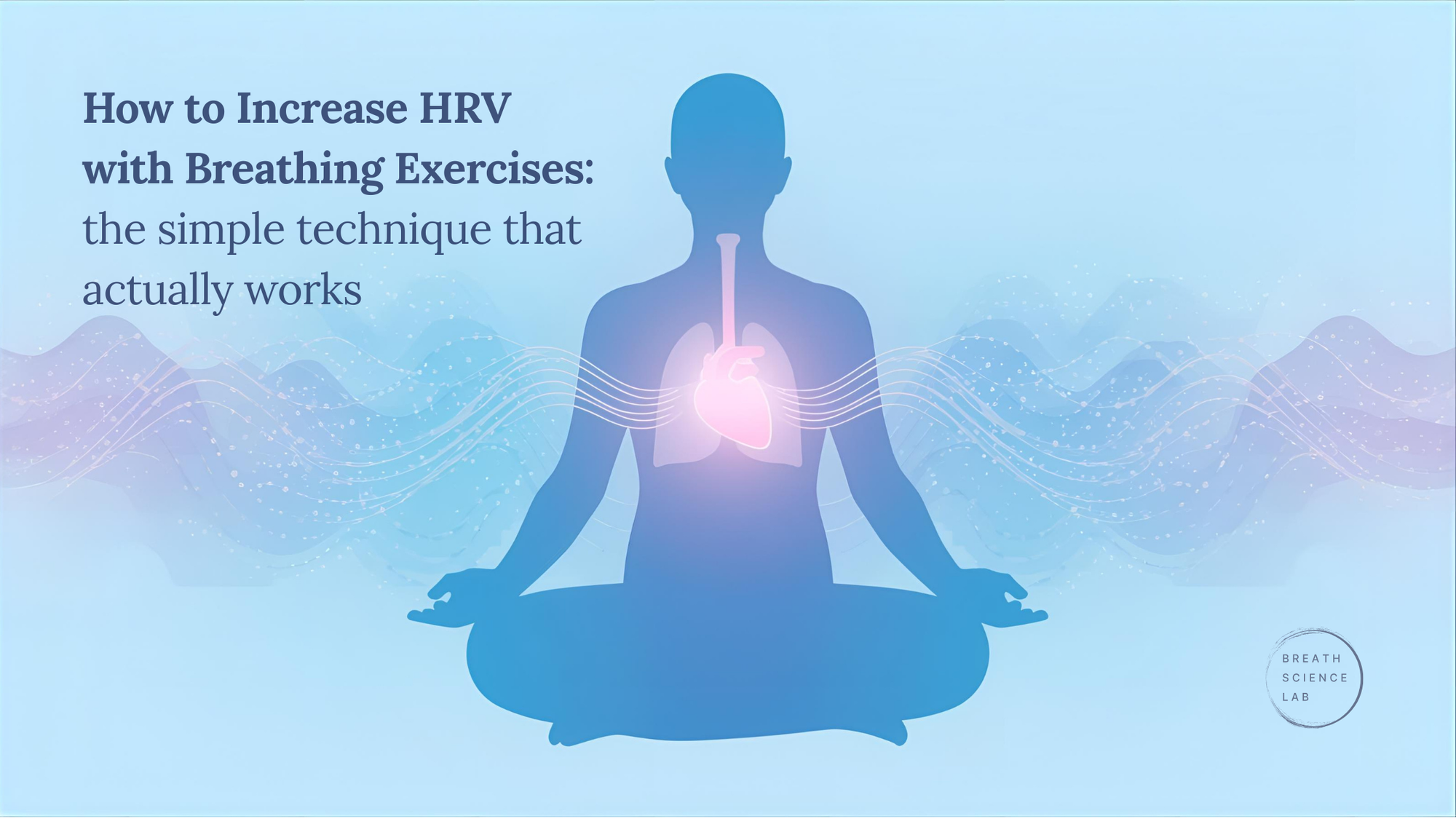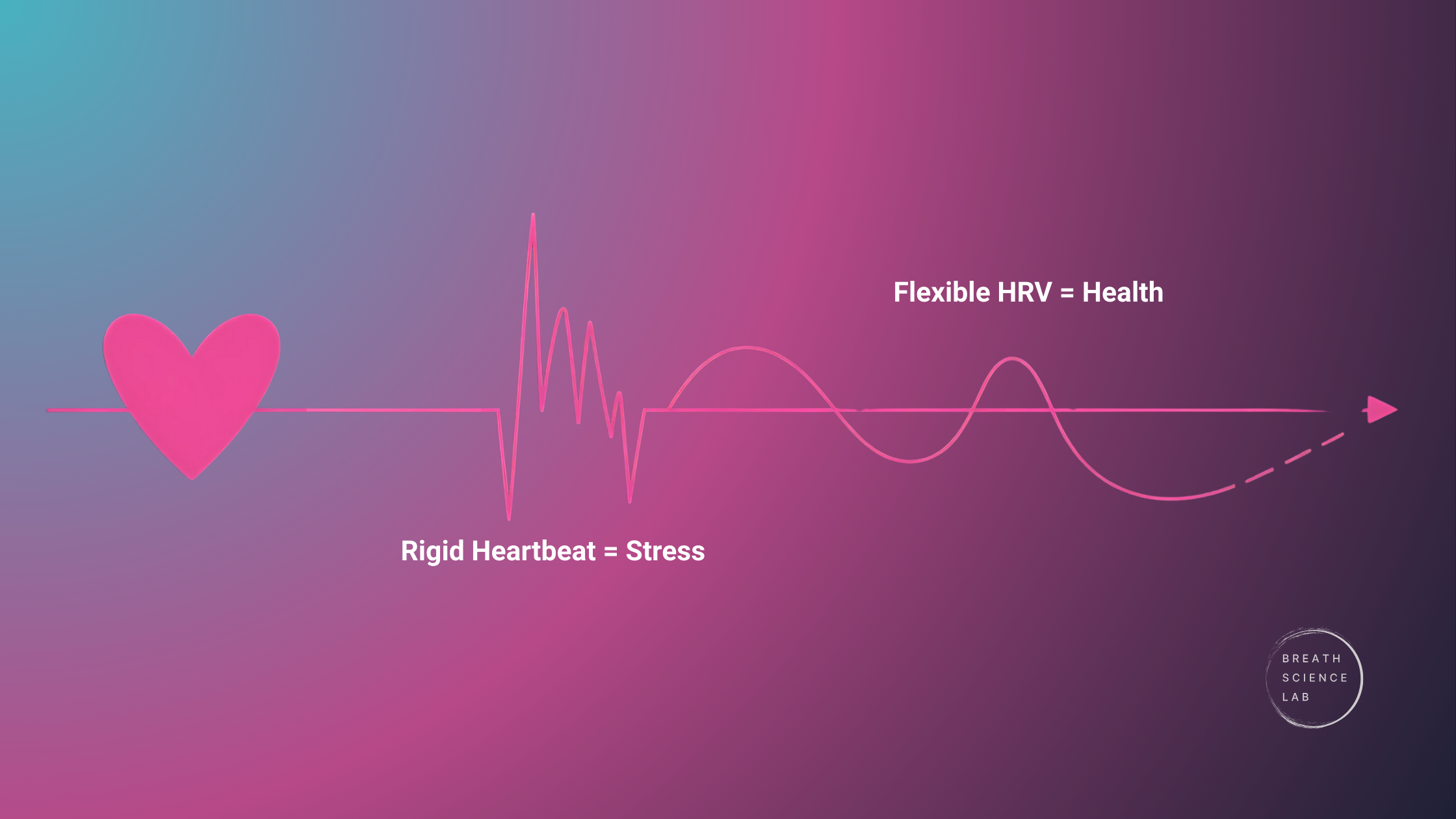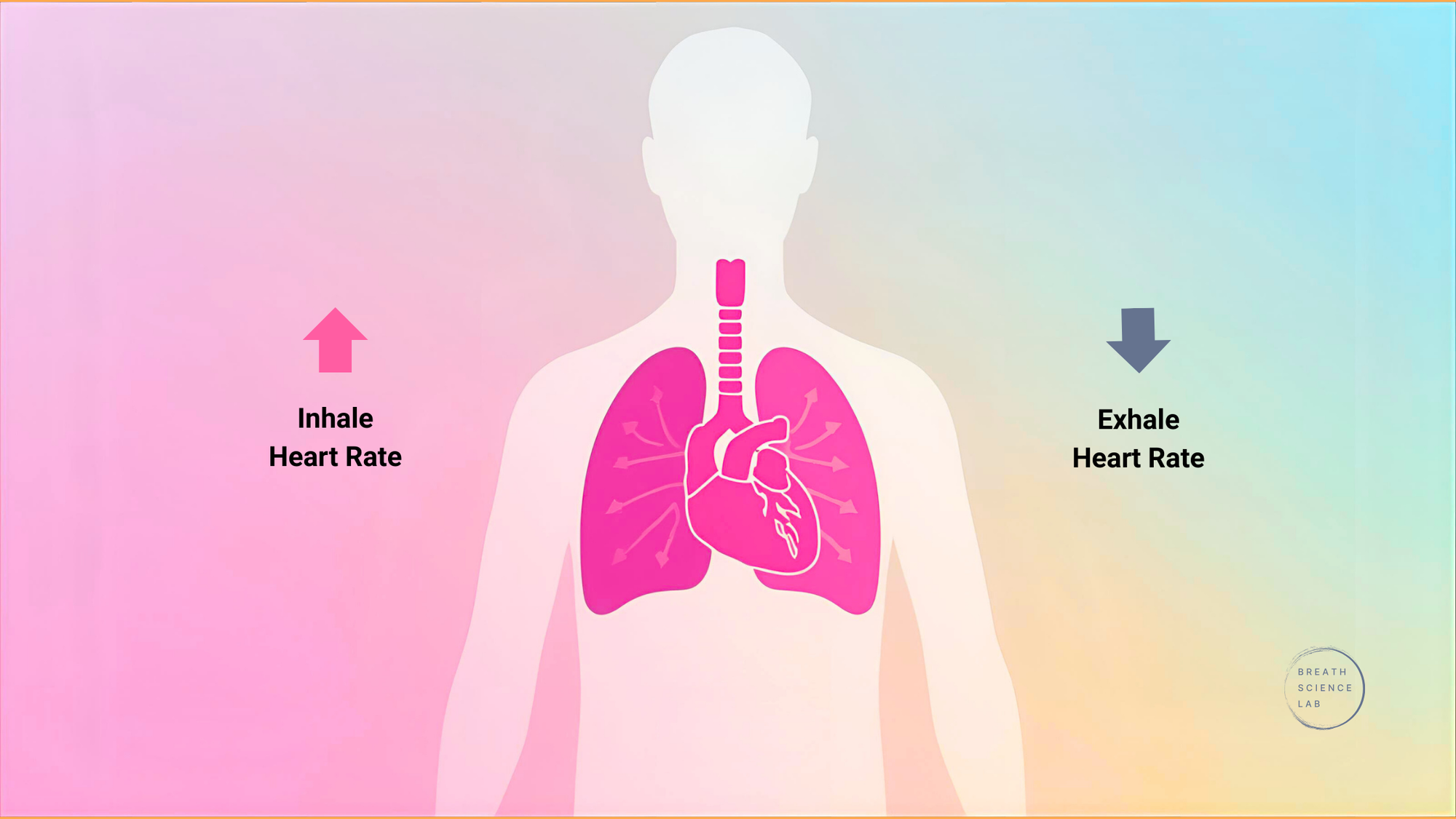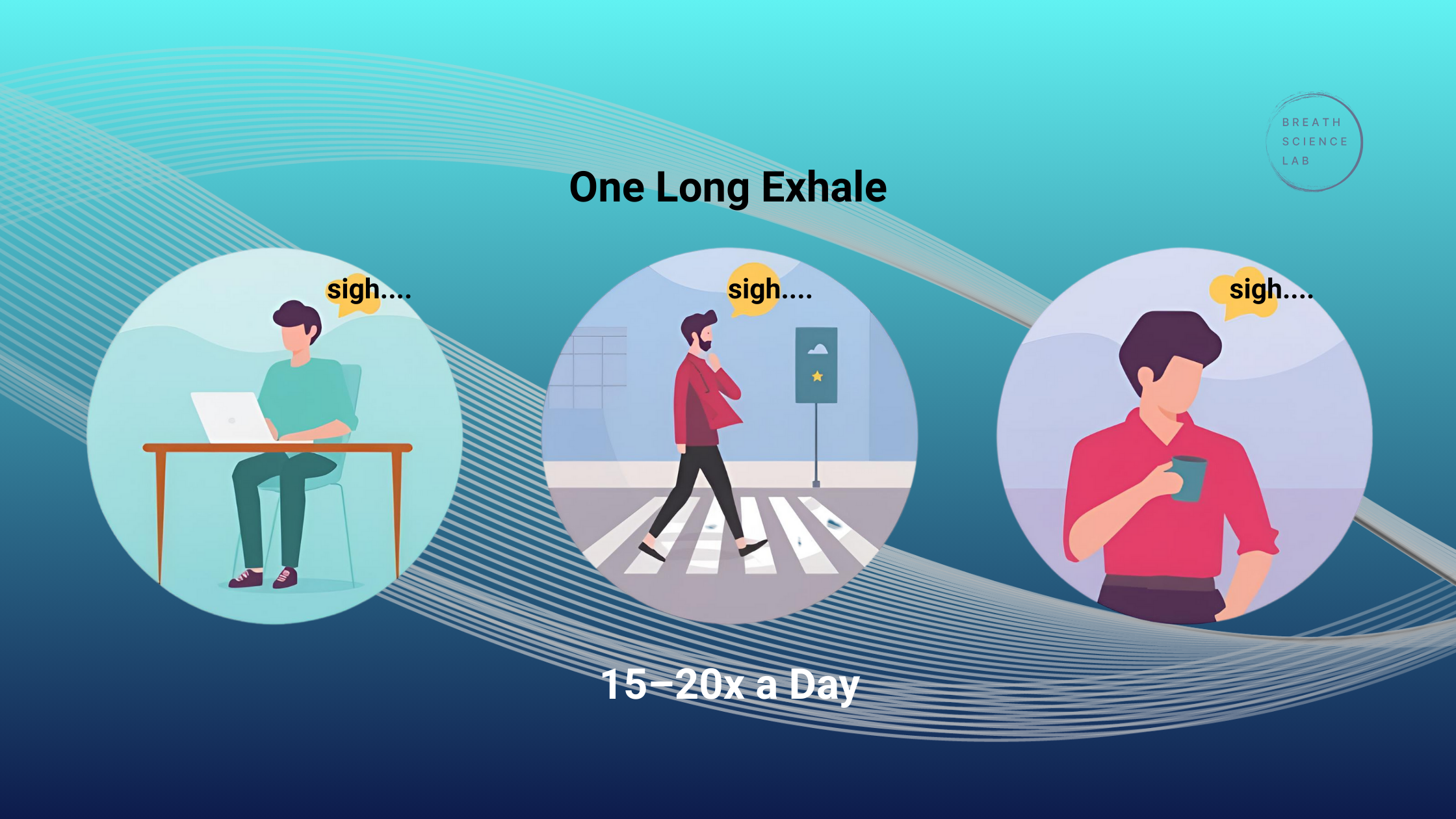How to Increase HRV with Breathing Exercises: the simple technique that actually works

Your smartwatch keeps sending you low Heart Rate Variability alerts. Your chest feels tight even at rest. You get a full night's sleep and still wake up tired. You're not falling apart. You're stuck in a state known as the fight-or-flight response. It's your nervous system stuck in protection mode, and there is a switch to shut it off.
Heart Rate Variability is a read on your nervous system. Higher is better. It's your body's ability to manage stress. The good news is: you can train it with your breath.
What HRV really tells you
Your heart is not a metronome, and it shouldn't behave like one. Tiny beat-to-beat changes are a good thing. They signal flexibility. More flexibility, better recovery. More calm on demand.

Breathing controls heart rate
On an inhale, heart rate rises slightly. Exhale, heart rate drops. The vagus nerve is the brake pedal. Longer exhales, press that pedal. This is how your body works.

The physiological sigh: your fast reset
Do this when you're stressed out
- Big nasal inhale to about 80 percent.
- Quick second sniff to top off.
- Long, slow mouth exhale to empty
One cycle should last about 9-10 seconds. Two or three cycles usually take the edge off. This technique is one of the few that uses chemistry and mechanics together.
Why it works: the double inhale opens the tiny air sacs in your lungs so you can dump more CO2 on the exhale. And the long exhale fires the vagus nerve. Heart rate drops. HRV starts to climb.
Follow this breath-pacer to get the feel for it.
Related: The Triggers That Spike Anxiety, and a 5-Minute Breath That Actually Works →
The compounding effect of this simple daily breathwork routine
15-20 times a day, when you remember, do a single longer-than-normal exhale. No app. No count. Just a slow empty. Then go back to business as usual.
Every time you do this, you strengthen the brain-to-breath pathway. Do this often, and your sleeping HRV stats usually trend up.

When you need to calm down right now
Two minutes before a dreaded conversation. In the car after bad news. In the grocery line.
Your 2-minute reset protocol for overwhelm: perform 3-5 physiological sighs consecutively. Make the exhale longer than the combined length of both inhales. Stop when you feel your shoulders drop and your vision widens.
Or
Try the Tailored Breath Pacer - Stop forcing generic breathing patterns. Discover the pace that actually works for you.
When breathing exercises feel uncomfortable
If breath-focused techniques make you feel worse, zoom out. Safety first.
- Start with only the slow exhale.
- Keep it gentle, not deep.
- Try a seated position with back support and your knees bent.
- Try humming on the exhale.
- Skip holds if they make you feel anxious.
The goal here is creating a safer brathing pattern your body will accept and repeat, not perfection.
Make it fit in real life
Incorporate slow exhales into things you already do.
- Waiting for coffee.
- Between meetings.
- Red lights.
- Before talking to your kids.
- Walking to your car.
Use physiological sigh for the spikes. Use quiet, long exhales for maintenance.
What changes when you keep at it
Give it a few weeks of tiny reps:
- Falling asleep gets easier.
- Mornings feel more relaxed.
- Stressors don't hijack the whole day.
- You recover faster between stress hits.
- Your HRV measurements usually climb.
This isn't magic. It's a course correction. You're teaching your nervous system to downshift on cue.
The real payoff
You breathe all day anyway. Use it with intention. These simple breathing exercises beat complicated routines. Exhale slowly. Add the physiological sigh when you need speed. Listen to your body and keep it repeatable.
Your body knows what to do once you give it the signal.



